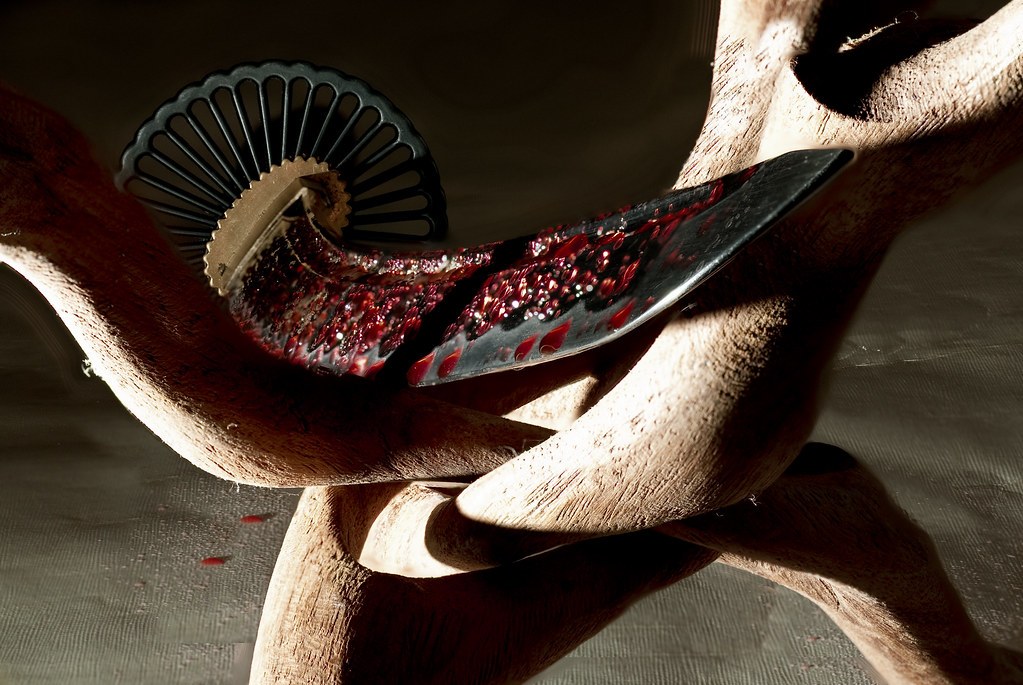 I found a new toy to play with. I have been taking some photographs of flowers lately, and I found I have been wanting a shallow depth of field to blur the background sufficiently, but that leaves too little of the foreground in focus. A friend suggested I try Helicon Focus, a product that stacks images focused at different points into a single image that combines the focused areas from the composing images.
I found a new toy to play with. I have been taking some photographs of flowers lately, and I found I have been wanting a shallow depth of field to blur the background sufficiently, but that leaves too little of the foreground in focus. A friend suggested I try Helicon Focus, a product that stacks images focused at different points into a single image that combines the focused areas from the composing images.The ability to stack images to make a single image with a deeper depth of field useful for macro or closeup work where the sharpest f/stop for many modern digital cameras is limited to around f/8-f/11 to prevent diffraction from softening the image. Many macro shots might require f/22 or higher to get the desired depth of field.
There is also something known as "hyperfocal distance". If the lens is focused at the hyperfocal distance, everything from half the hyperfocal distance to infinity should be acceptably in focus. In reality though, the closer to infinity or the near range the subject is the softer they will become. Print or view size and distances determine what the true hyperfocal distance is. The problem with hyperfocal distance is it can be a very long ways out for a telephoto lens. You might have to be 200 ft away from your subject.
 A solution is to use the Helicon (or equivalent) software to focus at multiple points between the subject and infinity (or the final focus point). These images are then stacked to produce depth of field unachievable by stopping down. A tilting lens/view camera can shift the focus plane out towards infinity, but at the expensive of defocusing somewhere else. This can put the entire picture in focus.
A solution is to use the Helicon (or equivalent) software to focus at multiple points between the subject and infinity (or the final focus point). These images are then stacked to produce depth of field unachievable by stopping down. A tilting lens/view camera can shift the focus plane out towards infinity, but at the expensive of defocusing somewhere else. This can put the entire picture in focus.Since perspective is controlled by where you stand relative to the subject (and viewing distance from the print/image), this allows the photographer new ways of achieving differing perspectives. I can use a telephoto/macro lens to photograph a very long object away from the lens and keep the entire length in focus.
The big restriction is you have to take multiple images, so it won't work well on moving subjects. Thankfully they build in some manual retouch tools as well to fix small amounts of movement, etc, but forget it if you are trying to photograph flowers in the wind.
The program is amazingly intuitive to use, and it worked correctly the first time for my simple watch example. On more complicated images where there is a lot of blurring of the background it can be a bit trickier. As an object blurs in either the foreground or background the blur becomes larger the further it is from the focus point. These blurs, for the lack of a better word, can confuse the tool sometimes. Thankfully there is a manual retouch feature built in that works a lot like the selective brush in Lightroom 2 combined with a tool like Clone in Photoshop.
A second problem when focusing on objects progressively further away is the lens focal length changes, and sometimes this is quite substantial, especially with internal focus (IF) lenses. The focal length is measured at infinity. A lens like the Tamron 18-250mm, which is a fine lens BTW, might only be 150mm at close focus, and doesn't reach 250mm until infinity. This causes objects to scale differently and your field of view to change. Thankfully, the tool compensates for this quite nicely automatically rescaling the images to be the appropriate size.
My main lessons learned are to overlap areas of focus a bit, don't use on moving subjects, and watch foreground/background blur that can cause artifacts (see the Iaito, practice sword, above), and use the smallest aperture you can get away with as it limits the problematic foreground/background blur.
I am thrilled to find such a tool, thank you Ryan, as it brings more depth to my photography, horrible pun intended.
Eric
